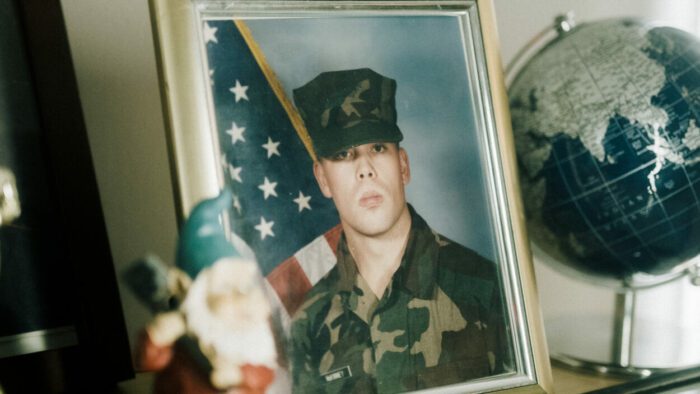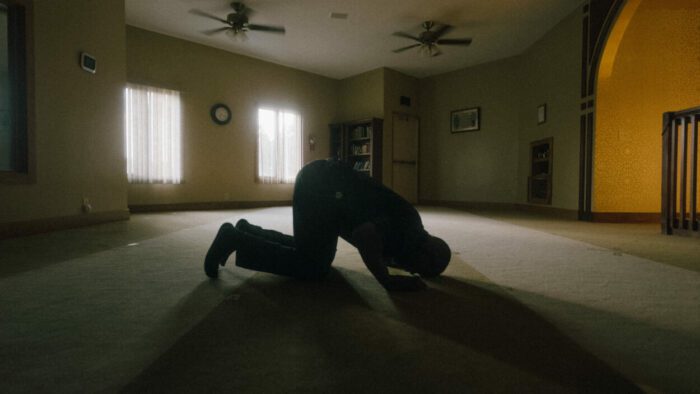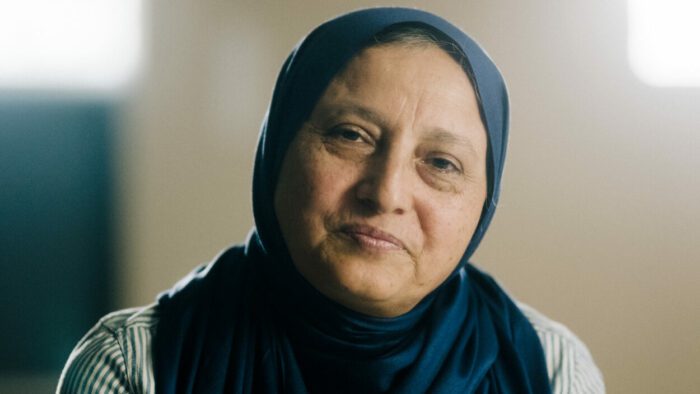If there exists a single film this year with the potential to eradicate hate—or, at least, mitigate its troublesome pervasiveness in the U.S.—it might well be Joshua Seftel’s short documentary Stranger at the Gate. The story Seftel’s film tells is a simple one, but it’s intensely powerful, moving, and instructive. It’s one of immigration to the U.S., of religious freedom, and, most tellingly, of one former Marine’s nearly having become a domestic terrorist and mass murderer.

Richard “Mac” McKinney is that former U.S. Marine, a troubled Indiana teen who enlisted at age 18, like his father, largely in the hopes of earning his father’s respect. There he served for nearly 25 years, witnessing and executing the deaths of his enemies. It changed him. He learned to look at his targets, he says, as “anything but human,” in order to fulfill his duties.
McKinney’s missions eventually culminated in an all-consuming rage toward the people he had been fighting against, even after injuries forced his discharge and he settles into middle age. As he returns to his boyhood hometown of Muncie, Indiana, his dependence on alcohol fuels the hatred he feels each time he sees one of the many Afghan refugees who have settled there. Having been trained to see Muslims only as his enemy, McKinney can’t so much as enter his local Walmart without finding himself infuriated.

Somewhere between drunkenness and sobriety, McKinney hatches a plan. He’s no munitions expert, but almost anyone can fashion a bomb. And so he does: an IED. His target? The Muncie Islamic Center, where hundreds of Afghans like Bibi and Sabher Bahrami and Jomo Williams congregate regularly to pray, socialize, and exercise. He wouldn’t be the first domestic terrorist to target a mosque—the American Civil Liberties Union reports anti-mosque activities in nearly every U.S. state-–many of them reportedly the consequence of 9/11 backlash.

McKinney doesn’t even care that he’ll likely get caught: he’s content to become a martyr for his cause. His anger feels justified, even by the presence of a young Afghan boy befriending his daughter. And then, something astonishing happens: determined to prove to his daughter, his “people,” “his country” that the Muslims are indeed his enemy, terrorists-in-waiting, McKinney visits the mosque, where something truly remarkable occurs.
In the interest of encouraging as many people as I can to see the film, I won’t summarize further, except to say you will not see the name of Mac McKinney or the members of the Islamic Center of Muncie on the list of anti-mosque incidents in the United States. What happened at the mosque in Muncie turned out to be something other than a domestic terrorist event but equally newsworthy for what did not happen—and why.

Especially for not being able to witness the story first-hand, Stranger at the Gate nimbly tells Mac’s story with testimony from his ex-wife, his daughter, and from members of the mosque he targeted. Each of them speaks directly to Seftel’s camera, narrating separate parts of the story with sincerity and directness. At just 30 minutes, the story of McKinney’s redemption is told economically and thoroughly—and it’s one everyone should see.
“The anti-Semitism I faced growing up led me for the past several years to tell stories that combat Islamophobia,” say Seftel. “My hope is that this film’s message shows what is possible when we confront hatred with compassion in divided times.” Shortlisted for the Academy Award for Best Documentary Short Feature, Stranger at the Gate is part of Seftel’s Emmy- and Peabody-nominated series of short documentaries Secret Life of Muslims, a project which aims to address Islamophobia directly.
It may sound simple to say, but Stranger at the Gate reveals one way to combat terrorism and hate: with simple love, acceptance, and kindness. The story of former Marine “Mac” McKinney suggests that “knowing the enemy” can come to mean, and accomplish, something remarkable indeed.
Stranger at the Gate was nominated for a Critics Choice Award and won a Jury Award at Tribeca Film Festival, where it was acquired by The New Yorker. It can be seen there, at screenings in New York, London, Copenhagen, Berlin, and San Francisco, or at a number of upcoming film festivals.




Terima kasih untuk informasinya, sangat berguna bagi saya